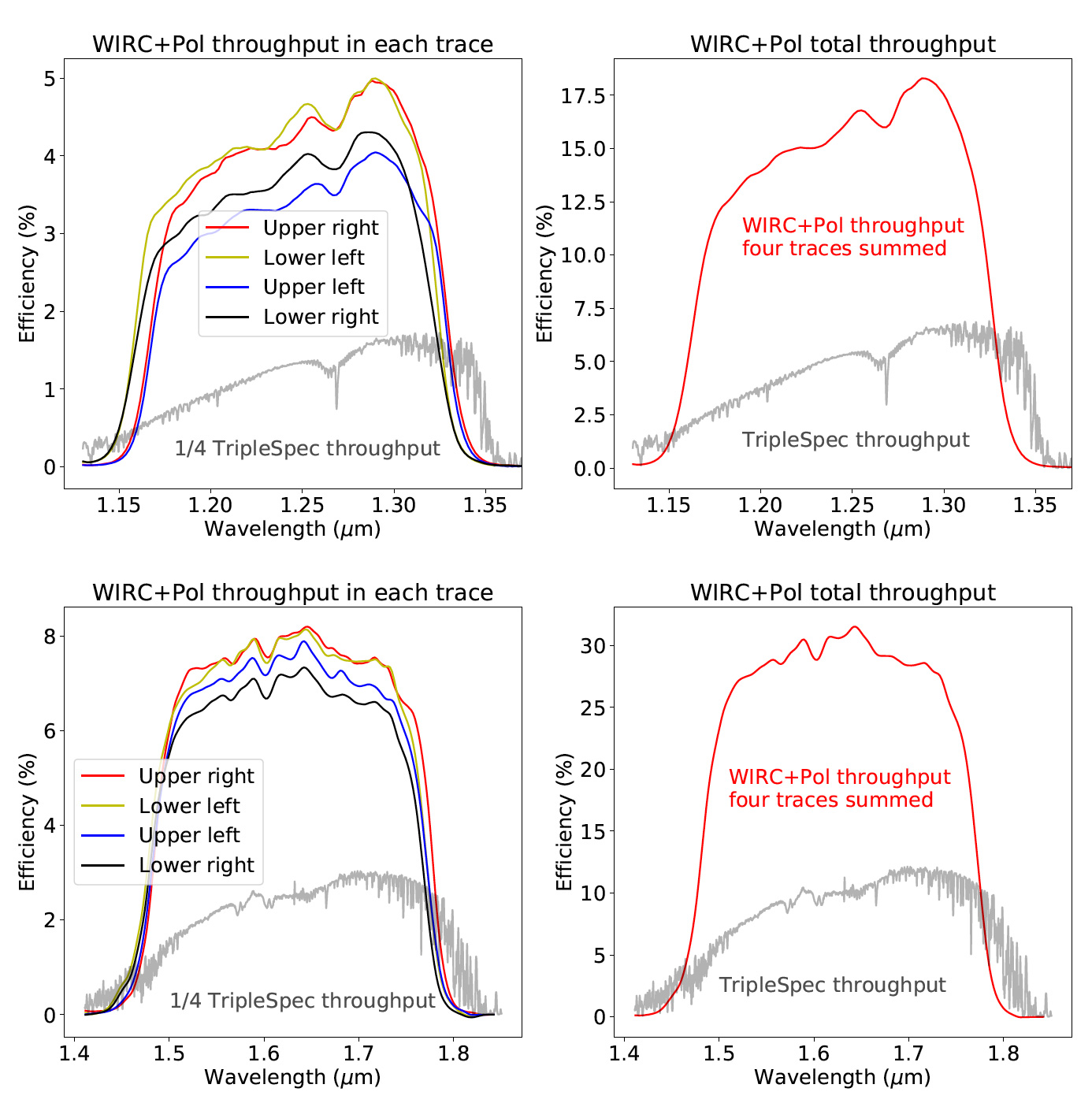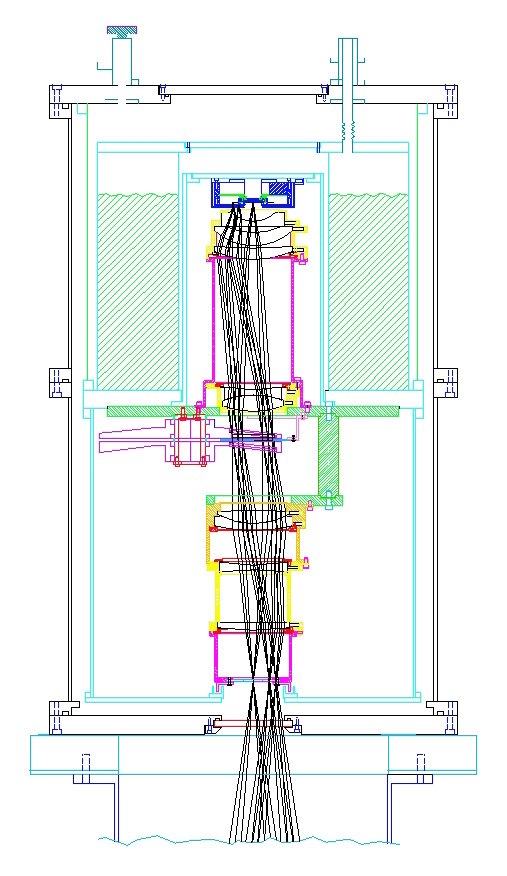
|
|

|
Wide Field Infrared Camera (WIRC) Technical Specifications
View the original specs page.
Status: Observatory Instrument
1. Updates
October 2019
- The filter suite was updated with the installation of He and removal of FeII filters. He was installed in Aft position 7, CO was moved from Aft position 7 to Fore position 3, FeII removed from Fore position 3.
- WIRC-Pol group installed external Polarizer and Half Wave plate slide and rotational stages.
June 2018
- Detector section: Gain is now measured to be 1.2 e−/ADU and dark current ~1 e−/s. Read noise still 11 e−. The minimum exposure time is now 0.92 second. Make note of the fact that requested exposure times from 0.92 to 1.84 second, will result in an actual 0.92s exposure time, with the wrong exposure time recorded in the header.
- Linearity: Detector is linear to 0.5% level up to 22,000 ADU, and 1% level up to 30,000 ADU. Full well is around 50,000 ADU.
- Sensitivities:
- Polarimetric mode: uncertainties in degree of polarization of σ ~ 0.1% for J ~ 8 source with 120s total integration time. To archive reliable calibration, an unpolarized standard star must be observed at the same location on the detector as the source. We can provide detailed instruction for polarimetry users.
- Systematic error: We noticed a nominal systematic error of ~ 0.3-0.7% when trying to calibrate different unpolarized standard stars to each other. The source of this error may be from telescope pointing and strong spatial dependence of instrumental polarization. Its characterization is underway.
- Instrument throughput: the PG has a throughput of ~ 93%. WIRC+Pol's
source to spectral traces throughput is ~ 16% in the J band. The figure below
shows
- throughput in each of the 4 traces (Note that each trace gets ~ 1/4 of the total flux.)
- throughput of the sum of the 4 traces

Top: WIRC+Pol's J band throughputs for (i) each of the 4 traces and (ii) sum of all traces. TripleSpec's J band throughput is given for comparison. Note here that TripleSpec's figure is consistent with Fig. 4 in Moon et al., 2008. Bottom: Same as top, but for the H band.
September 2016
- WIRC Array was upgraded to science-grade H2 (old Keck OSIRIS array).
- New H2 has been deemed science-ready by WIRC-POL key project team.
2. Documentation
Please reference this SPIE paper: Full SPIE paper, PDF file.
3. Telescope
- 200-inch prime focus, f/3.3.
- Field of view: 8.7′ on a side.
4. Detector
- 2048 × 2048 Hawaii-II HgCdTe.
- Gain 1.2 e−/adu.
- Dark current: ~1 e−/s
(due to slight filter leak, dome must be dark when taking dark frames). - Read noise: 11 e−.
- Frame rate (shortest exposure time for full array): 0.92 seconds.
- Linearity: Detector is linear to 0.5% level up to 22,000 ADU, and 1% level up to 30,000 ADU. Full well is around 50,000 ADU.
5. Scale
- 0.2487″/pixel (residuals = rms 0.286″ RA and 0.296″ Dec).
- The camera is rotated 1.39° relative to N and E directly along rows and columns.
6. Filters (Standard Setup)
For an excellent set of WIRC filter transmission profiles put together by J. Wilson and L. Smith, U. of Virginia go to WIRC Filter Plots.
| Filter Wheel | Wheel Position | Filter | Wavelength Center | Manufacturer |
|---|---|---|---|---|
| Fore Wheel | F-1 | Open | – | – |
| F-2 | PG | – | – | |
| F-3 | Brγ | 2.166 | NDC Infrared | |
| F-4 | Diffuser | – | – | |
| F-5 | CO (0-2) | 2.294 | NDC Infrared | |
| F-6 | H-cont | 1.570 | NDC Infrared | |
| F-7 | Grism | – | – | |
| Aft Wheel | A-1 | K-cont | 2.270 | NDC Infrared |
| A-2 | He | – | – | |
| A-3 | H2 | 2.120 | NDC Infrared | |
| A-4 | Open | – | – | |
| A-5 | Ks | 2.150 | Barr Associates | |
| A-6 | H | 1.635 | OCLI | |
| A-7 | J | 1.250 | OCLI | |
Questions? We've answered many common observing and operations questions in our observer FAQ page.
Please share your feedback on this page or any other Palomar topic at the
COO Feedback portal.
WIRC Specs / v 2.1.2
Last updated: 12 August 2022 ACM
|
|
|
